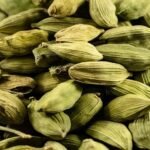India needs to increase its cashew production to overcome export restrictions imposed by key African producers, said Gunjan Jain, President of the Nuts and Dry Fruits Council of India (NDFC-I).
“We are no longer the top exporter of cashew nuts. However, we are still the leading processor and consumer,” Jain told businessline. “Right now, it’s essential for India to start growing more cashew.”
He added that India’s coastal regions—from West Bengal on the eastern coast to Gujarat on the western coast—are ideal for growing cashews.
“If we begin working on this now, we can significantly improve our production in the next 15 years. Importing raw cashews will become more difficult in the future,” Jain warned.
Export Restrictions by African Nations
Jain’s comments follow export restrictions by African countries like Côte d’Ivoire, Benin, and Tanzania, aimed at boosting local processing industries.
Last year, when cashew production was hit by El Niño, Côte d’Ivoire banned exports. Now, it has introduced a 5% export tax and extended its ban on shipments during the early harvest season from 30 to 45 days. During this period, exports are not allowed so that local processors get priority access to the new crop.
“These restrictions are being put in place to grow their own industries,” said Jain. “Benin has banned exports too, but much of its cashews are smuggled into Togo through porous borders.” In Tanzania, all agricultural products must now go through the Tanzania Mercantile Exchange.
These changes have reduced India’s dominance in the global cashew market. “India remains the largest consumer and one of the biggest producers, but our exports have fallen sharply. This is because Indian cashews are sold at higher prices compared to the international market,” he explained.
Trade and Price Pressures
High production costs in India have led to a loss of market share to countries like Vietnam. Some Indian companies with processing units in Vietnam are doing better due to lower costs there.
“These government trade restrictions are unfortunate. Cashew prices have increased by 45% when they should have gone up by only 25% due to lower production,” Jain noted.
This year, cashew production looks better, which might help stabilize prices. But in India, prices may remain high because demand is rising. Also Read | Nut and Dried Fruit Council imports high-yield walnut and cashew seedlings to boost…
Other Dry Fruits Also Affected
“Prices of all nuts and dry fruits are very high right now,” said Jain. “California had a poor pistachio crop, and almond production was lower than expected—2.7 billion pounds instead of the estimated 3 billion. Next year’s forecast is just 2.65 billion pounds.”
Australia also experienced a 20% drop in its crop yield. These factors have pushed almond and cashew prices to record highs.
Walnut prices have doubled in the past two years due to poor harvests. In India, raisin production dropped this year because most fresh grapes were sold during Ramadan—grapes were the main fruit available at the time, and mangoes had not yet arrived. Jain explained that only leftover grapes are used to make raisins in India.
He concluded by emphasizing the health benefits of nuts and dry fruits: walnuts are rich in Omega-3, pistachios provide protein and amino acids, and almonds and cashews also offer important health benefits.


















Add Comment